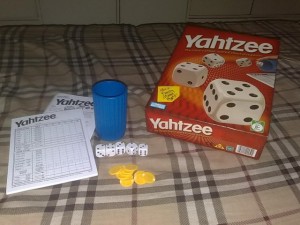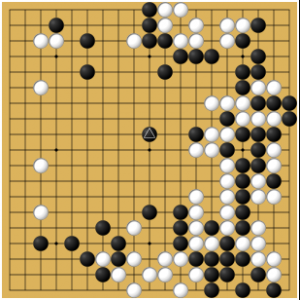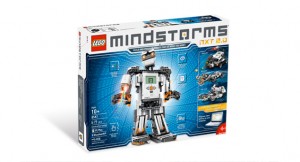One of many insightful educators I follow on Twitter, Tom Whitby, wrote A Modest Blog Proposal asking for bloggers to post educational suggestions on October 17th, 2010. He proposed the acronym REBELS for “Reforms from Educational Bloggers Links of Educational Suggestions”. I found the idea of a “rebel” education very intriguing and if there’s one place where educators need to resist authority, I think it’s the mathematics curriculum.
Before we get into my proposed curriculum, it’s important to have an idea of where we’re starting. Paul Lockhart describes the existing system quite concisely in A Mathematician’s Lament:
The Standard School Mathematics Curriculum
LOWER SCHOOL MATH. The indoctrination begins. Students learn that mathematics is not something you do, but something that is done to you. Emphasis is placed on sitting still, filling out worksheets, and following directions. Children are expected to master a complex set of algorithms for manipulating Hindi symbols, unrelated to any real desire or curiosity on their part, and regarded only a few centuries ago as too difficult for the average adult. Multiplication tables are stressed, as are parents, teachers, and the kids themselves.
MIDDLE SCHOOL MATH. Students are taught to view mathematics as a set of procedures, akin to religious rites, which are eternal and set in stone. The holy tablets, or “Math Books,” are handed out, and the students learn to address the church elders as “they” (as in “What do they want here? Do they want me to divide?”) Contrived and artificial “word problems” will be introduced in order to make the mindless drudgery of arithmetic seem enjoyable by comparison. Students will be tested on a wide array of unnecessary technical terms, such as ‘whole number’ and ‘proper fraction,’ without the slightest rationale for making such distinctions. Excellent preparation for Algebra I.
ALGEBRA I. So as not to waste valuable time thinking about numbers and their patterns, this course instead focuses on symbols and rules for their manipulation. The smooth narrative thread that leads from ancient Mesopotamian tablet problems to the high art of the Renaissance algebraists is discarded in favor of a disturbingly fractured, post-modern retelling with no characters, plot, or theme. The insistence that all numbers and expressions be put into various standard forms will provide additional confusion as to the meaning of identity and equality. Students must also memorize the quadratic formula for some reason.
GEOMETRY. Isolated from the rest of the curriculum, this course will raise the hopes of students who wish to engage in meaningful mathematical activity, and then dash them. Clumsy and distracting notation will be introduced, and no pains will be spared to make the simple seem complicated. This goal of this course is to eradicate any last remaining vestiges of natural mathematical intuition, in preparation for Algebra II.
ALGEBRA II. The subject of this course is the unmotivated and inappropriate use of coordinate geometry. Conic sections are introduced in a coordinate framework so as to avoid the aesthetic simplicity of cones and their sections. Students will learn to rewrite quadratic forms in a variety of standard formats for no reason whatsoever. Exponential and logarithmic functions are also introduced in Algebra II, despite not being algebraic objects, simply because they have to be stuck in somewhere, apparently. The name of the course is chosen to reinforce the ladder mythology. Why Geometry occurs in between Algebra I and its sequel remains a mystery.
TRIGONOMETRY. Two weeks of content are stretched to semester length by masturbatory definitional runarounds. Truly interesting and beautiful phenomena, such as the way the sides of a triangle depend on its angles, will be given the same emphasis as irrelevant abbreviations and obsolete notational conventions, in order to prevent students from forming any clear idea as to what the subject is about. Students will learn such mnemonic devices as “SohCahToa” and “All Students Take Calculus” in lieu of developing a natural intuitive feeling for orientation and symmetry. The measurement of triangles will be discussed without mention of the transcendental nature of the trigonometric functions, or the consequent linguistic and philosophical problems inherent in making such measurements. Calculator required, so as to further blur these issues.
PRE-CALCULUS. A senseless bouillabaisse of disconnected topics. Mostly a half-baked attempt to introduce late nineteenth-century analytic methods into settings where they are neither necessary nor helpful. Technical definitions of ‘limits’ and ‘continuity’ are presented in order to obscure the intuitively clear notion of smooth change. As the name suggests, this course prepares the student for Calculus, where the final phase in the systematic obfuscation of any natural ideas related to shape and motion will be completed.
CALCULUS. This course will explore the mathematics of motion, and the best ways to bury it under a mountain of unnecessary formalism. Despite being an introduction to both the differential and integral calculus, the simple and profound ideas of Newton and Leibniz will be discarded in favor of the more sophisticated function-based approach developed as a response to various analytic crises which do not really apply in this setting, and which will of course not be mentioned. To be taken again in college, verbatim.
So if Educational Rebels could have their way with the math curriculum, what would it look like instead? Certainly it would be different from what goes on in the Educational Empire.

Rebel vs. Empire terminology geekily borrowed from Star Wars. Image obtained from Wookieepedia.
Within the Educational Empire, there are Official Imperial Standards which teachers must adhere to or they will be fired and annual multiple-choice tests that students must take as if their lives depended on them. As Imperial teachers routinely state, students who do poorly on these tests will die poor and lonely, and students who do well on these tests will go on to an Empire approved Private Academy where they will accumulate massive debts which must be repaid to the Empire through decades of hard labor.
The Rebels would do away with all of this. Instead of multiple-choice choice tests, students would have authentic assessments where they create products they can be proud of. Teachers would have educational goals in mind for instruction, but the nature of the material covered is directed by the students. Students are free to learn about the things they are genuinely interested in, and often go home telling their parents how they “can’t wait to go to school tomorrow”. Upon graduating from public schools, students are well prepared to start pursuing the career of their choice. Those who want to further the field of knowledge in their respective area of interest can go on to to a Rebel college for free, where they are guided in conducting effective scientific research.
The Rebels would need to rewrite the curriculum from scratch to accomplish all of this, starting with the math curriculum. The new curriculum would be nonlinear and individualized for each student. The students would be the ones to direct learning, and the teacher would be there as an experienced learning guide. The following tale describes the math curriculum of some hypothetical Rebel students:
Rebel Mathematics Curriculum
Elementary School
Student exposure to mathematics begins with games. Students start with simple games in the beginning, and the games get more complicated as the students progress. These particular students start with games like Rock-Paper-Scissors, Go Fish, Tic-Tac-Toe, Hide-and-Seek and Dodgeball. In the context of these games, students learn how to play within a set of rules and learn the basic language of logic and sets. Students learn what it means when the rules say “Do this and this”, “Don’t do this or that”, “Move this from this group to that group”, “Combine this group and that group”, “Separate this group into multiple groups based on some quality”. These concepts form a solid foundation for mathematical thinking. As students progress, they get into games where counting becomes more important. Students play games like Sorry!, Chutes and Ladders, Hi Ho Cherry-O, and even sports like Tennis. As students become more familiar with counting, they get into games with more complex scoring methods like Yahtzee, Blackjack, Monopoly, and Risk where they further develop their arithmetic skills.

Dice games like Yahtzee can be used to introduce basic arithmetic skills. Image obtained from Wikipedia.
Middle School
In Middle School, students continue to play increasingly complex games. Students play board games like Chess and Go, card games like Poker, and video games like Sim City and World of Warcraft. Students are encourage to engage in meta-cognitive processes as they play, by talking about different strategies for optimizing how they play. The basic concepts behind Algebra and Probability emerge naturally from these discussions. Students start developing games of their own, beginning with board and card games and moving into programming simple video games. That’s right, all students are encouraged to start programming in middle school. After the students develop a prototype game, they play-test the game, collect data from the play-test, analyze that data, and use the information they discover to revise the rules of their game. The middle school hosts a Game Convention at the end of the school year where each class puts on a demonstration of their game and the process they used to come up with it. The parents are invited to come play their kids’ games and see how the students’ critical thinking skills have developed.

Game record of a Go match between Honinbo Shuusaku and Gennen Inseki in 1846. Image obtained from Wikipedia. The game of Go is immensely complex, and one of few games where Artificial Intelligence research has yet to reach the level of professional human players.
High School
In High School, the class of students that worked as a group in middle school starts to diverge into different groups based on individual interests. Students with an interest in sports might have a math course that is focused on Geometry and Spacial-Reasoning, with a little bit of Game Theory on the side. Students with an interest in Music might combine Trigonometry and a little computer programming to produce new and interesting sound effects. A group of photography and art students start programming new filters in GIMP to create original effects for their images. A group of students interested in journalism learns about web programming as they put together a professional looking web site. A group of students that developed an interest in Racing games, is introduced to physics and some real-world automotive engineering. A group of students with an interest in programming starts learning about Calculus as they write their own First-Person Shooter. Another group of students uses a Lego Mindstorms kit to build a robot that sorts a line of objects by size, learning a variety of math and engineering skills in the process. Students graduate from high school with more than just a diploma, but a portfolio of work demonstrating their mastery in their subject area of interest. Students show off these portfolios at a convention where the local employers are known to stop by to identify potential job candidates. Most of these students will move straight into a job in their field of interest, but some will go on to pursue further research opportunities in college.

Products like Lego Mindstorms can be used in high school to develop practical engineering skills. Image obtained from Official Lego site.
College
All Rebel students have the option of furthering their education in a publicly owned and operated Rebel University. This education is provided at no cost to students. Exceptional students conducting research at the Rebel University may even be paid for their contributions. Rebel society recognizes the value of academic research, and considers the value of the knowledge resulting from student research to more than compensate for the costs associated with running the Rebel University. Students don’t just go to college to learn, they go to further the existing knowledge in their respective fields.
Conclusion
In this Rebel Education, gone are the days of Algebra, Geometry, More Algebra, Trigonometry, and Calculus. Gone are the days of lengthy multiple choice tests. Teachers assess students by analyzing the products they create and encourage the students themselves to critically reflect on their own creations. Students are not pressured to meet Imperial standards, but instead are responsible for setting their own goals for improvement each semester. The students don’t feel like they are competing to score higher than their classmates, but instead learn to recognize that each of their classmates has a different set of skills and that by cooperating they can achieve things that they could not do alone. While the Empire is pumping out clone after clone, the Rebels are producing a diverse array of students with varying sets of knowledge and skills.
Which students do you think would be happier and more successful in life? Those with their Empire prescribed cookie-cutter education? Or those from the Rebel academies?
I must confess that there has not been enough research to predict what the long-term effects of such a Rebel education would be. However, I do think there is a substantial amount of evidence indicating that the traditional Imperial curriculum is failing. Educational research provides incremental improvements to the existing curriculum, but perhaps the system’s assumption that everyone should have the same education is fundamentally flawed. At some point in the future, it may become necessary for “Educational Rebels” to overthrow the “Educational Empire” and challenge this assumption. The mathematics curriculum proposed here may not be perfect, but it might provide a starting point that educators can revise and improve over time.

This work is licensed under a Creative Commons Attribution-ShareAlike 3.0 Unported License. You are free to share and remix this work, provided that the source is properly attributed and derivations are released under a similar license.


What is the probability (or possibility) of even implementing a diluted version of the Rebel Math Curriculum to the new US Core Standards?
If traditional publishers are reluctant or resistant to abandoning a boring curriculum that has shortchanged hundreds of millions of students, maybe math educators round the world should seriously resort to coolfarming a curriculum that would tap on the cool teaching and learning methods from Singapore math, China math, US math, Israel math, Korea math, Russia math, Japan math, and the like?
Math education is too important to be left in the hands of publishers and politicians, who have so much vested interest in maintaining the status quo.
The technologies are there to collectively share the best math models to help both teachers and students in appreciating the power and beauty of mathematics. Vision 2020: A “Glocal” Math Curriculum to eradicate innumeracy round the world!
Wow – what an awesome trip through a revised math curriculum. My own kids are starting to go through the same type of math classes I went through 30+ years ago. If they could get even a glimmer of the types of work you offer, they would be so much better off…
[…] http://www.suburbanlion.com/?p=134 […]
[…] Wees suggesting that we teach math more like programming. I've proposed something similar to this before, but as the conversation continued into the details of learning how to program I started to think […]
So we really need to a skit related to this post. Imagine Darth Vader leading a math classroom full of clone warriors and Luke Skywalker acting as a resistor.
Darth Vader:
“Join the dark side, Luke. You cannot imagine the power of repetitive exercises and calculations.”
Luke:
“Never. I will never join you. I will keep searching for meaning in mathematics.”
Darth Vader:
“Luke, I am your teacher.”
Luke:
“Noooooooooooooooooo!!!”
[…] principal, Allan Alach referred me to a blog http://www.suburbanlion.com/?p=134 Thank you, Allan. It was such fun to read and I know that everyone will enjoy it. Please bear […]